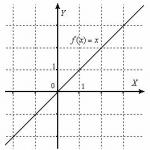Benefits for small businesses. New criteria for small businesses and benefits. Tax deduction for “kids”
Recent amendments to tax legislation suggest a complete reform of this area.
This is required by the difficult economic situation in the country and the desire to increase budget revenues. The government is taking the path of tightening the collection of mandatory payments and raising tax rates. And here the easiest way is to “squeeze” property owners.
Payment rules for legal entities and individuals
Property tax is the responsibility of the regions. In 2019, before December 1, payments are made for the period 2018.
Individuals
You will have to pay tax to any person, who owns the real estate specified in Article 401 of the Tax Code.
Accrual base The cadastral valuation according to the Unified State Register is recognized (Article 403, Chapter 32). Legal ways to reduce the payment amount must be taken into account.
Legal entities
Organizations and businesses of all forms also pay taxes. All the main points of this are reflected in Chapter 30 of the Tax Code.
In order for real estate to come to the attention of tax authorities, all that is required is two conditions:

And here method of property ownership An enterprise has much more than a citizen, starting with the usual property and ending with options that are sometimes incomprehensible to the average person:
- temporary possession/disposal;
- trust management, concession;
- and others.
In general, the tax system for legal entities much more complex than “civil” rules. Until now, many properties of legal owners are subject to taxes based on the average annual assessment.
The cadastre is applicable for the following property:
- administrative and management complexes, commercial buildings;
- non-residential premises used for offices, catering or consumer services;
- real estate of foreign enterprises operating in the Russian Federation without representative offices;
- non-balance-sheet residential premises (the same service housing, for example).
Tax rate property payments from the cadastral calculation are in charge of local authorities authorities who determine the exact value of the rate, according to Art. 380.
Changes in the legislative framework on this issue
Loud changes identified Federal Law No. 284 dated 10/04/14 on the addition of Chapter 32 “Property tax for individuals” to the Tax Code. In accordance with paragraph 1 of Article 402, inventory assessment for calculating real estate replaced by cadastral value object. In fact, we can talk about a completely new property tax.
The corresponding amendments to the legislation took effect on 01/01/15. That year became an experimental platform for testing new provisions. Payments for the 2015 tax period, calculated according to the cadastral principle, were received by the owners in 2016.
 To level out citizens' dissatisfaction and a softer transition to a tough scheme, the “pleasure” of rising taxes was extended over time until 2020:
To level out citizens' dissatisfaction and a softer transition to a tough scheme, the “pleasure” of rising taxes was extended over time until 2020:
- in the next 5 years, rates will increase by 20% each year;
- reduction factors are applied;
- regions are connected in stages, depending on the economic feasibility of the reforms (that is, the solvency of the population and the number of budget “holes”).
The main directions of Federal Law No. 335, adopted last November, surprised us with the number of changes that affected property taxes. A rather unpleasant surprise for many was taxation for categories of persons acting as UNIT payers from January 1, 2018. The rule remains in effect in 2019. If until this moment the transfer was mandatory for organizations operating under the general deduction regime, USTV, simplified tax system and according to the patent form, now the innovations have also affected producers of agricultural goods.
While for organizations the tax has become mandatory only on property objects subject to cadastral value, for those who belong to the category of VAT payer, it has been introduced for absolutely all forms of property, both movable and immovable.
Starting this year, the tax burden will increase not only in the area of VAT, but also in the introduction of budget allocations for all fixed assets that are not directly related to the agricultural sector.
Besides, new law regulates that individuals Now they will deduct 0.1% of the cadastral value of real estate.
Rates
The following quantities are defined:
| Property valuation (rubles) | Tax (%) |
|---|---|
| Up to 10,000,000 | 0,1 |
| From 10,000,000 to 20,000,000 | 0,15 |
| From 20,000,000 to 50,000,000 | 0,25 |
| From 50,000,000 to 300,000,000 | 0,35 |
| From 300,000,000 | 3 |
| garages/parking spaces | 0,1 |
| private unfinished construction | 0,3 |
| other real estate | 0,5 |
By design of hardship new system This will be felt primarily by owners of expensive luxury real estate. The increase for owners of middle-class and economy buildings is not as significant.
So it is considered. However, the first price level has the widest range of people's social affiliation. A family can live in a three-room apartment, and a businessman who is not demanding of conditions can live in a one-room apartment.
Please note that the rates shown in the table are basic for the regions. Local legislative authorities have the right to change them.
As before, this year rates were increased mainly for owners of expensive real estate; other categories of homeowners were practically not affected by the increase.
Types of real estate
Before changes We all paid tax for four categories of “real estate”:

Since in recent years completely new forms of ownership have emerged in the ownership of citizens, the usual list replenished with the following property (Article 401):
- parking spaces;
- dachas and similar buildings on the site;
- unfinished objects;
- unified real estate complex (UNK) - includes several buildings, united technologically and by location into one system by the owner’s title documents (Article 133.1 of the Civil Code of the Russian Federation).
Regions of application
For citizens
Currently, most regions have switched to a new tax scheme– 61 subjects.
Reform process happened like this:
- Since 2015, the scheme has been launched as a “pilot” project in 28 regions of the country. The list of “pioneers” was opened by Buryatia, Ingushetia, republic. Komi, Trans-Baikal Territory, Udmurtia, Tatarstan, Moscow and some other regions of the country with an acceptable quality of life for the population.
- On next year Cadastral taxes began to be collected in another 21 regions. In 2017, reforms came to the Orenburg region, Adygea, Karelia, the Astrakhan, Murmansk, Oryol and Tambov regions, the Jewish region and the Chukotka Autonomy.
- In 2019, the program is active in 57 regions of the Russian Federation. The list includes a number of large industrial areas where the quality of life of the population is an order of magnitude higher.
For legal owners
Here the changes are not so rapid: the regions are in no hurry to apply legislative innovations.
Cadastral value for administrative objects, trade and business centers by tax period applies as follows:
- 2015 – 29 regions were introduced;
- 2016 – 19 entities connected;
- 2017 – 8 localities were added to the list;
- 2018 - the list of federal subjects where changes adopted at the legislative level have entered into force and are actively being applied is 64 regions, which is 2.5 times more than in 2015.
Providing benefits and deductions
There is a “drop of honey” in the “ointment” - the initiators of the new tax scheme retained the applied tax preferences.
Taxpayers still have the opportunity to reduce tax expenses, or even not pay at all.
Categories of beneficiaries
Article 407 of the Tax Code defines the circle of persons completely released from property payments.
 On the list of beneficiaries:
On the list of beneficiaries:
- all categories;
- disabled children;
- citizens affected by radiation after various accidents at civilian facilities;
- persons who took part in thermonuclear tests of special risk;
- liquidators of nuclear accidents at military facilities;
- family members of military personnel killed in service;
- representatives creative professions in relation to objects used directly in such activities;
- an individual - for outbuildings up to 50 square meters, located on garden plots, under individual housing construction.
The state suppresses attempts to re-register real estate to a beneficiary. Therefore exceptions provided for one object each type of real estate at the owner's choice. If he does not do this, the Federal Tax Service will help make a decision, but not in favor of the beneficiary.
Thus, you can avoid paying for a house, apartment and garage at the same time, but you won’t be able to avoid paying for two apartments at once.
Tax deductions
Anyone can reduce taxes by reducing the taxable area.
Deductions are provided for these types of real estate (in sq. meters):
- rooms – 10;
- apartments – 20;
- private house – 50.
These are all-Russian norms. Municipalities and authorities of cities with federal status have the right to increase deductions.
In practice, the procedure is carried out by subtracting from overall assessment cadastral assessment for preferential area. Sometimes applying deductions results in a negative value. The owner can rejoice: the tax base is considered equal to zero, and he will not have to pay anything.
Calculation procedure
The cadastral value is established by the subject using Law 135 “On Valuation Activities”.
Periodicity revision:

You can find out the current price on the Rosreestr portal through the help section. You can also contact the tax service. But for this you will need the cadastral number of the property.
The owner is not required to calculate the tax on his apartment himself. For him the tax office will do this and will notify you with the appropriate receipt. However, due to latest changes, it is better to know in advance the amount to be budgeted.
Tax calculation according to the new scheme is carried out using the formula:
H = (H1*SK – H2*SI) *K + H2*SI
- N – total payment amount;
- N1 – cadastral valuation of real estate;
- SC – cadastre rate;
- H2 – inventory value;
- SI – inventory tax rate;
- K – coefficient.
Reduction factors: 2016 – 0.2; 2017 – 0.4; 2018 – 0.6; 2019 – 0.8. Owners agree to pay 100 percent according to the cadastre no reduction by 2020, after which the payment is calculated as the multiplication of the cadastral value by the rate minus the tax deduction.
Algorithm calculations:
- determine the amount of tax from the cadastre;
- We calculate the inventory payment;
- determine the difference between these indicators;
- multiply the resulting result by the reduction factor;
- inventory tax is added to the total.
Example
Let's consider the transfer in 2019 for the period 2018.
Data object:

Let's define tax base cost: 2,500,000 * 50 / 30 = 1,500,000 rubles. The cadastral tax is 1,500 rubles (1,500,000 * 0.1 / 100), the inventory payment is 250 rubles (250,000 * 0.1 / 100).
As a result the owner will pay 450 rubles: (1500 – 250) * 0.2 + 250.
The procedure for challenging appraisal actions
Raises a lot of questions cadastral valuation. Often the figure is significantly overestimated.
This is especially true for houses built in the 60s and 70s. Morally and physically, these buildings are outdated: depreciation exceeds half of their real value. But state system another opinion: the house, it turns out, is still in price. In practice, it is not realistic to sell a house for that kind of money, but the tax is impressive. Inconsistencies are also typical for “younger” objects.
Therefore, the logical question is: is it possible to challenge the cadastral valuation of real estate if it is overestimated? The law provides such an opportunity, but you will have to be persistent.
Provided two ways:
- filing a claim with the courts;
- commission resolution of disputes in the local branch of Rosreestr. You can familiarize yourself with the procedure for challenging on the departmental website.
 Another possible situation is errors in accrual payment. But they can be detected by a person who is aware of the tax calculation procedure and his rights to apply benefits.
Another possible situation is errors in accrual payment. But they can be detected by a person who is aware of the tax calculation procedure and his rights to apply benefits.
To restore justice not difficult:
- a written claim is sent to the Federal Tax Service division at the place of its registration or through Personal Area tax portal. The appeal must list errors in the calculations and indicate the grounds for providing benefits (if any). The claim ends with a demand for the return of the overpayment;
- representatives of the department are required to give a written response;
- If you disagree with a negative decision or if the appeal is ignored, you need to go to court.
Taxes are paid, rights are defended
 When introducing a cadastral property tax scheme, the initiators refer to international experience. However, in Russian conditions, the main share of payments will fall on citizens with low/average incomes. Remember, no one will exempt you from tax, but any owner can approach the issue wisely.
When introducing a cadastral property tax scheme, the initiators refer to international experience. However, in Russian conditions, the main share of payments will fall on citizens with low/average incomes. Remember, no one will exempt you from tax, but any owner can approach the issue wisely.
Innovations for 2019
On January 1, 2019, a law signed by the President of the Russian Federation came into force, which now adjusts the mechanism for calculating tax based on cadastral value (property tax, land tax).
The coefficient of 0.8 is canceled, that is, the coefficient will reach a value of 0.6 and will not increase. The changes also introduce a 10% limit on the increase in the amount of tax payable for last year, in addition, they exclude the possibility of recalculating the tax “retroactively” if the adjustment does not lead to a reduction in payment.
Since 2019, if the taxpayer was able to prove that the cadastral value was calculated incorrectly, then the law obliges the use of the changed cadastral value when calculating the tax at the moment when the erroneous value began to be applied.
The annual increase in the amount of property tax calculated based on cadastral value is now limited to 10%.
For information on the new rules for paying fees for real estate, watch the following video:
Before you understand what benefits you can count on, you need to make sure that the business meets the criteria by which it can be classified as an SME.
Small business in 2019 - determination criteria
Income limits for SMEs installed in .
To understand whether a company meets the criteria for a small business or not, you need to take into account not only sales revenue (criterion before August 1, 2016), but all income from business activities.
In 2019, small companies are those that, firstly, fit within the income limit of 800 million rubles. and in terms of the number of personnel of 100 people, and secondly, they comply with the requirements for the share of participation of other companies in the authorized capital: for government entities, public and religious organizations and foundations - no more than 25% in total; for ordinary legal entities, including foreign ones, no more than 49% in total; There are no restrictions for legal entities that are themselves small and medium-sized businesses.
Since August 1, 2016, it has been operating using reporting data. This resource can be accessed on the Federal Tax Service website. The register allows you to verify the availability and correctness of the entered data about a specific business. To use it, just enter the INN, OGRN, OGRNIP, company name or full name of the individual entrepreneur.
Why does the registry matter? Because the presence of information about the enterprise in it guarantees the possibility of receiving certain benefits that are entitled to small businesses. Therefore, if the register does not contain information about your business or you find out that the information that is available is incorrect, do not be lazy to send an application and provide the correct information.
Tax holidays
For the first time registered individual entrepreneurs can “go” in 2019 to. This support measure arose in a timely manner, right at the height of the economic crisis - from January 1, 2015. Tax holidays, according to officials, should become an incentive to start a business against the backdrop of an unstable situation in the economy.
On the eve of 2019, the president signed, according to which the moratorium on routine inspections of small businesses is extended for another two years - until December 31, 2020. Checks cannot be avoided only by those who work in areas where a risk-based approach has been introduced, and by legal entities and individual entrepreneurs whose licenses have already been taken away or suspended, or if a resolution imposing an administrative penalty for gross violation Code of Administrative Offenses of the Russian Federation or there has been disqualification or administrative suspension of activities.
An entrepreneur has the right to submit an application to the control (supervision) body to exclude himself from the annual inspection plan if he finds himself in the plan and considers this inspection illegal. A decision on the application is made within 10 days from the date of receipt. If a positive decision is made, the test is canceled and removed from the plan. To search for planned inspections, it is better for entrepreneurs to use the consolidated plan for inspections of business entities for 2019 on the official website of the Prosecutor General's Office of the Russian Federation.
Regional tax incentives
Local authorities have the right to introduce such benefits in 2019. Therefore, it is better to find out the most accurate information on the regional websites of business support centers. The easiest way is to use the search in the “Support for SMEs in the regions” section on Federal portal small and medium enterprises. Specify your region and you will automatically be taken to the “local” SME portal.
Subsidies
Small businesses can apply for subsidies from the state. The cases when it is provided are listed in. The same document contains a list of documents required to receive money.
It is better to clarify the conditions and procedure for receiving a subsidy on the regional websites of administrations, centers for development and support of entrepreneurship and other government agencies related to entrepreneurship problems. For example, on the website of the Department of Science, Industrial Policy and Entrepreneurship of the city of Moscow you can find information on subsidies for both beginning entrepreneurs (from the moment of registration of a legal entity, individual entrepreneur - no more than two years) and for more experienced businessmen.
Thus, a Moscow entrepreneur can count on compensation for leasing payments, compensation for interest on loans, compensation for the cost of purchasing equipment, etc. The Department’s website outlines the conditions, procedure, and even provides forms for the necessary documents.
Personnel accounting
Procurement
The auction winner receives the right to a preferential lease, but subject to the restoration of the property at his own expense. Rate 1 rub. per sq.m. per year begins to operate after completion of the reconstruction of the facility and fulfillment of the program requirements.
It is also important to note that since July 3, 2018, it has been in force, which expands property support for small and medium-sized businesses. This law establishes a perpetual right of redemption of leased public and municipal property and the possibility of using land plots when providing property support to SMEs.
All small businesses have the right to enjoy certain concessions in relation to accounting and reporting. It doesn’t matter which tax regime they use - “simplified”, UTII, patent or common system taxation, benefits are the same for everyone. What benefits are available for small businesses now?
Benefit for small businesses No. 1. does not need to be installed
Small businesses, as well as all entrepreneurs, have the right not to set a cash balance limit. That is, they can accumulate money in their cash register as much as they want. And entrepreneurs also have the opportunity not to register receipt orders, expense orders and do not maintain cash book(paragraph 10, paragraph 2, paragraph 2, paragraph 4.1 and paragraph 9, paragraph 4.6 of Bank of Russia Directive No. 3210-U dated March 11, 2014). To switch to a simplified cash register procedure and abandon the cash balance limit, issue a corresponding order.
Benefit for small businesses No. 2. It is possible to conduct simplified accounting and submit abbreviated accounting reports
Small businesses can use simplified accounting methods (). Businessmen do not keep accounts, so this relaxation is not relevant for them.
And for companies - small enterprises, abbreviated forms are provided financial statements. In addition, they do not have to draw up appendices to the reporting if there is no important information that requires decoding for controllers or founders (clause and order of the Ministry of Finance of Russia dated July 2, 2010 No. 66n).
The book from our magazine “” will help you fill out the reports:
Benefit for small businesses No. 3. Established
From January 1, 2016 to December 31, 2018, almost all scheduled non-tax audits of small businesses (). We have posted a detailed commentary from a tax service representative about this in the following article.
Benefit for small businesses No. 4. Regional authorities are developing their own benefits
Regions have the right to provide small businesses with tax exemption (). So, individual entrepreneurs on the simplified tax system or a patent, who open their own business in the industrial, social and scientific spheres, are completely exempt from tax payments for a period of two years. That is, they may not pay a “simplified” tax or not pay the cost of a patent. In particular, the relevant laws were adopted in the capital (), Kurgan region (), the Republic of Bashkortostan (Law of the Republic of Bashkortostan dated April 28, 2015 No. 221).
Also, in many regions, income and income minus expenses have been introduced for the object.
And simplified workers pay fees for certain types of activities at reduced rates - 20%.
Benefit for small businesses No. 5. It is possible to conclude fixed-term employment contracts with employees
IN general case It is possible to conclude a fixed-term employment contract only in two situations (). The first is if the nature of the work to be done or the conditions for its implementation do not allow concluding an open-ended employment contract. And secondly, if two conditions are simultaneously met - the employee agrees to conclude a fixed-term employment contract and he belongs to one of the categories that are listed in Article 59 of the Labor Code of the Russian Federation, for example, he is an old-age pensioner. However, an exception has been made for small businesses. They have the right to enter into fixed-term agreements with all their employees. employment contracts for a period of up to five years. Even if there is no special reason to sign a fixed-term contract. But there are two restrictions. Firstly, the number of employees of a small company should not exceed 35 people. And in the sphere retail and consumer services - 20 people. Secondly, for fixed-term contract employee consent is required ().
Benefit for small businesses No. 6. Participation in government procurement
If your company meets the criteria, then you have privileges in government procurement. Which? Customers must purchase goods, works and services from small businesses in an amount of at least 15 percent of the customer’s annual purchase volume (Part 1, Article 30 of Law No. 44-FZ dated 04/05/2013). Read more about government procurement for small businesses in an article on our website.
Benefit for small businesses No. 7. Inexpensive periodicals
Small businesses can save money on professional magazines. For example, you can save a lot when paying.
In the Moscow region, work continues to create favorable conditions for small and medium-sized businesses (SMEs). Thanks to the attractive background, more than 9 thousand SMEs were opened in the region last year. The regional authorities expect that 2017 will also be “fruitful” for new enterprises - this year it is planned to open 10 thousand SMEs.
Measures to support entrepreneurs
Small and medium-sized businesses are considered to be enterprises whose number of employees does not exceed 250 people, for small enterprises – from 16 to 100 people, for joint ventures – from 101 to 250 people. All of them can count on government support at the federal, regional and municipal level. However, it is available only to officially registered entities; you can apply for individual entrepreneur registration on the regional website.
Federal level
- Subsidies to reimburse part of the cost of paying interest on loans.
- Subsidies to compensate for part of the costs of using energy resources and maintaining jobs.
- Subsidies for the development of engineering.
- Subsidies for seasonal purchases of raw materials and materials for light organizations and textile industry.
- Subsidies in the form of a property contribution of the Russian Federation to the Rostec State Corporation for projects to create serial production machine tool products within the framework of the subprogram “Machine tool industry” of the state program “Development of industry and increasing its competitiveness” (http://base.garant.ru).
Also, small businesses in Russia are protected from scheduled inspections for three years - since January 1, 2016, such events have been introduced in the country. The Cabinet of Ministers of the Federation Council believes that the moratorium will help create favorable conditions for the development of small businesses in Russia.
Regional level
Nadezhda Osodoeva






